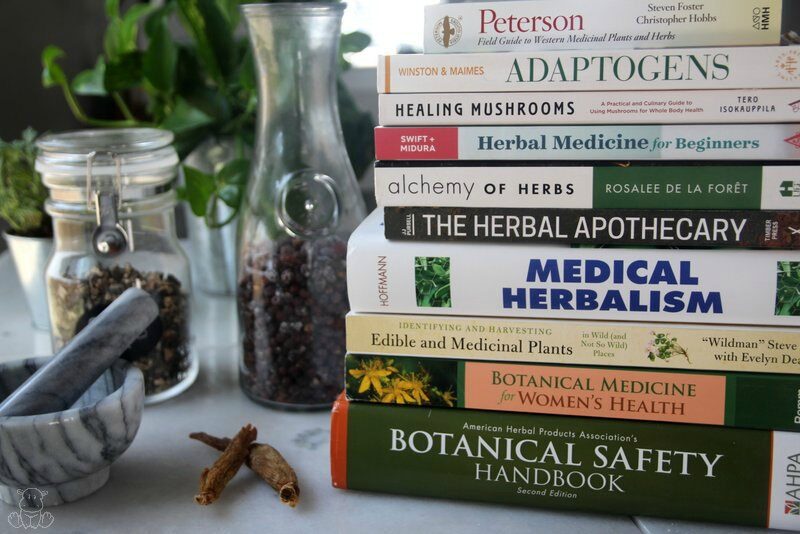
Sometimes I get funny looks when I mention valerian root tincture or kava kava tea, like they couldn’t possibly have valid benefits. It’s easy to forget that many common medicines are derived from plants and fungi. For example, did you know that more than 40% of pharmaceuticals that are on the market today – including penicillin – are derived from fungi?
Yep, fungi. (1)
And then there’s aspirin, which was first derived from willow bark and meadowsweet. (2)(3) People were using willow bark to ease discomfort for 3,500+ years before aspirin was introduced. That’s not to say that the two are the same – they’re not – just that many medicines have a similar origin story.
Herbs clearly have profound benefits, because teams continue to search forests and fields for plants to study. And while I support that, there is already so much wisdom in these books about how to use plants to support our family’ s health.
Unlike isolated derivatives, herbs used in their whole form often contain synergistic compounds that balance each other and increase the beneficial effects.
Some are delicious, some smell like stinky feet (I’m looking at you, valerian), and some are so pretty it’s hard to know whether to brew them or put them in a vase. All are worthy of respect.
If you’re interested in learning more about how to use herbs, below are fifteen of my favorite herbal books by category. It was inspired by this Instagram post and the questions you had about which ones I recommend for different interests. If you’ve seen any of my herbal profiles or natural remedies, you’ve already benefited from the generous wisdom of these herbalists. Each category is alphabetized by title because I can’t pick favorites. 🙂
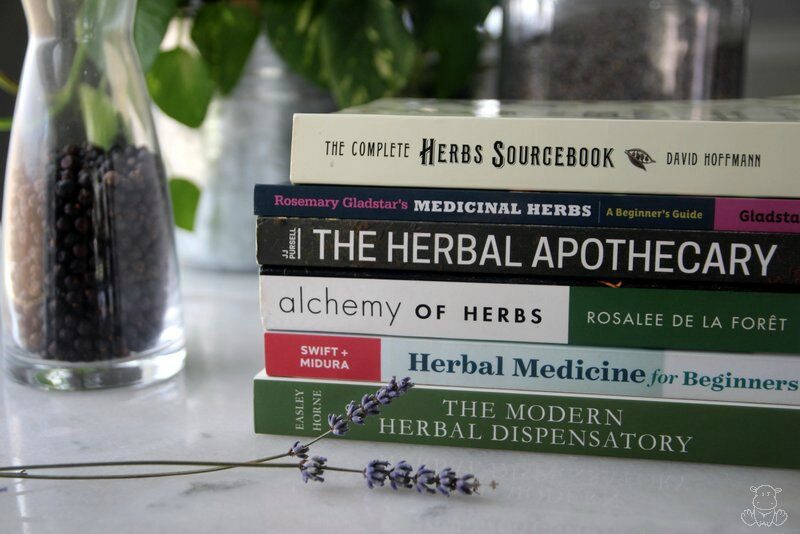
Herbal Books For Beginners (And Beyond)
Don’t let the word “beginner” fool you – these books are full of information and recipes that both beginners and experienced herbalists will appreciate. I’ve been relying on many of them for years and have not outgrown them yet!
Each book contains a materia medica, which is a description of individual herbs and their therapeutic properties. (Materia medica literally means “healing materials” in Latin.) Some offer detailed information about a small collection of botanicals, while others introduce you to a wide variety of plants while a brief overview.
For example, Herbal Medicine for Beginners covers just thirty-five herbs, but they’re “Swiss army knife” herbs that are versatile and can be used in a wide variety of situations. On the flipside, The Modern Herbal Dispensatory covers over two-hundred and fifty herbs but in much less detail. It does, however, explain how to make some herbal preparations not discussed in other books.
All that to say, there is no “right choice” when choosing which one (or ones) to start with. Each book is like inviting an herbalist into your home for a cup of tea and a kitchen medicine-making session, so just go with whatever one speaks to you and enjoy the conversation.
1. Alchemy of Herbs: Transform Everyday Ingredients Into Foods & Remedies That Heal
I have a bucket list of exotic herbs I want to try someday, but many of the ones I use most often can easily be found at your local grocery store or in your spice cabinet. In this book, herbalist Rosalee de la Foret shows you how to incorporate common herbs into daily life as you make natural remedies, personal care products and healthy culinary dishes. Most of the herb books on the list below do not include a lot of food recipes, making this book unique.
You can easily find most of the herbs in this book at your local grocery store, in your spice cabinet, or even growing in your yard: cayenne, cinnamon, fennel, garlic, parsley, rosemary, artichoke, cacao and dandelion are a few of them.
There are also a handful that you may have to order but are well worth having on hand, including nettle, elderberry, ashwagandha, lemon balm and rose.
Find it here: Alchemy of Herbs: Transform Everyday Ingredients Into Foods & Remedies That Heal
2. Herbal Medicine for Beginners: Your Guide to Healing Common Ailments with 35 Medicinal Herbs
This is a new addition to my collection that I am just now getting to dive into, but it’s already a favorite for three reasons:
1. You don’t need a huge apothecary to use it. Herbal Medicine for Beginners focuses on using a limited number of versatile, medicinal plants to create a wide range of herbal remedies for common ailments.
2. It’s well-organized, which makes it easy to find what you need.
3. It was co-authored CommonWealth Center for Holistic Herbalism founders Katja Swift and her husband, Ryn Midura. Katja’s comment on Mommypotamus back in 2011 sparked an online pen-pal friendship that has spanned many years. I’ve always loved the way she brings the personality of herbs to life when she writes about them, and this book is no exception. It’s beautifully photographed, too.
Find it here: Herbal Medicine for Beginners: Your Guide to Healing Common Ailments with 35 Medicinal Herbs
3. Rosemary Gladstar’s Medicinal Herbs: A Beginner’s Guide: 33 Healing Herbs to Know, Grow, and Use
Often called the Godmother of Modern Herbalism, Rosemary Gladstar is an internationally renowned herbalist and author of eleven books. No discussion of herbal resources is complete without mentioning at least one of them!
If you’re new to her work, this is the book I’d start with. It’s got a little bit of everything, including home remedies and instructions for growing and harvesting medicinal herbs that thrive in just about any climate.
Find it here: Rosemary Gladstar’s Medicinal Herbs: A Beginner’s Guide: 33 Healing Herbs to Know, Grow, and Use
4. The Complete Herbs Sourcebook
My favorite part about this book is “The Herbal” – a short overview of 200+ individual herbs. In it I discovered many herbs I’d never heard of but want to try . . . someday I’ll sip sundew and make true unicorn root tincture. Many of the profiles have lovely, elegant line drawings rather than photographs.
Unfortunately, the one downside of this book is that some of the text is laid over a green background, which makes it challenging to read.
Find it here: The Complete Herbs Sourcebook
5. The Herbal Apothecary: 100 Medicinal Herbs & How To Use Them
This guide includes one-hundred herbal profiles with color photographs, medicinal uses, dosage information, and identification/cultivation tips. Each profile is brief but informative and to the point. Like most of the books in this category, author JJ Pursell includes step-by-step instructions for making teas, tinctures, compresses, salves and other common herbal preparations.
(The only one I can think of that doesn’t have a dedicated section for this is Alchemy of Herbs, but you do learn how to make most common preparations as you go through the book. It’s just not in one dedicated spot as it is with most, and as I mentioned earlier Alchemy of Herbs is unique because it has more food recipes.)
The Herbal Apothecary also has a section that includes recipes for different types of concerns: sleep, the common cold, anxiousness, etc.
Find it here: The Herbal Apothecary: 100 Medicinal Herbs & How To Use Them
6. The Modern Herbal Dispensatory: A Medicine-Making Guide
In this guide, herbalists Thomas Easley and Steven Horne provide a solid foundation for making herbal lozenges, tea, tinctures and glycerites along with more advanced preparations that are not usually mentioned, so there’s something for herbalists of all levels. It includes over 250 herbal profiles with a brief description of the general properties of the plant along with dosage suggestions.
Find it here: The Modern Herbal Dispensatory: A Medicine-Making Guide
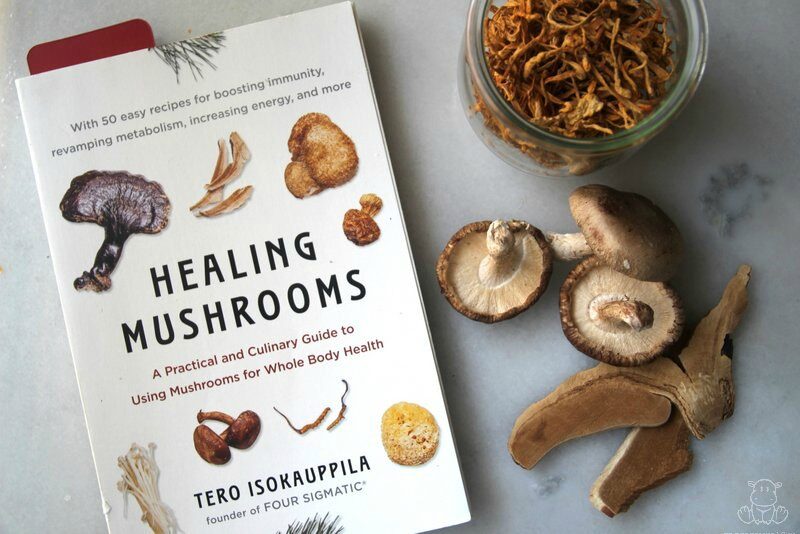
Medicinal Mushrooms
Years ago, when I first came across this mushroom coffee, I was like mushrooms and . . . coffee? Now I get it. Whether it’s the “mushroom of immortality, reishi, or commonly available shiitake, mushrooms have profound benefits and can be easily incorporated into daily life. Here are my favorite resources:
7. Healing Mushrooms: A Practical and Culinary Guide to Using Mushrooms for Whole Body Health
Which mushrooms help with stress and sleep, promote thick hair and glowing skin, support vibrant energy levels and uh, romantic desire? Tero Isokauppila, who foraged mushrooms growing up in Finland, explains all that and more with this highly readable and fascinating book.
You’ll see shiitake and oyster mushrooms in a new light, and probably discover a few that are new to you. I love the section called “Mushroom Magic In The Kitchen,” which is a collection of recipes developed by a chef.
According to Tero, “We had more than five hundred recipes to choose from and we are sharing fifty we’ve decided are the best, not only in terms of taste but also in how they deliver the most valuable and potent properties of the mushrooms they use.”
Find it here: Healing Mushrooms: A Practical and Culinary Guide to Using Mushrooms for Whole Body Health
Honorable mention: Adaptogens: Herbs for Strength, Stamina and Stress Relief covers two mushrooms with adaptogenic properties – cordyceps and reishi.
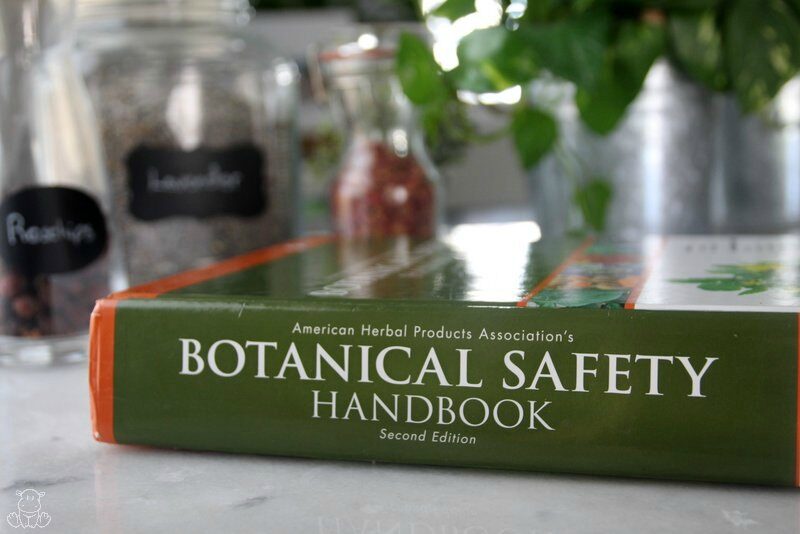
Herb Safety
The most common questions I get when I post about valerian root for sleep or some other herbal topic are:
- Is this safe for kids?
- Can I use this while pregnant or breastfeeding?
- Can I take this while (insert your scenario here)
I’m so glad these questions are being asked, because not all herbs are appropriate for all situations and websites often publish conflicting information. With that in mind, let me introduce you to one of my favorite books, the . . .
8. AHPA Botanical Safety Handbook
This is my go-to resource for safety-related issues. Over 500 hundred herbs are classified according to a rating system which helps me quickly identify:
- the safest herbs for use with children and while pregnant or breastfeeding
- which herbs should only be used externally
- what do avoid during pregnancy or while breastfeeding
- which ones are likely to interact with medications
- which ones should only be used with the supervision of a qualified expert
The index also includes many topics such as the thyroid and sleep onset with a list of herbs (and page numbers) that have published research on that subject. It can be very helpful when researching a particular topic or concern.
Find it here: AHPA Botanical Safety Handbook
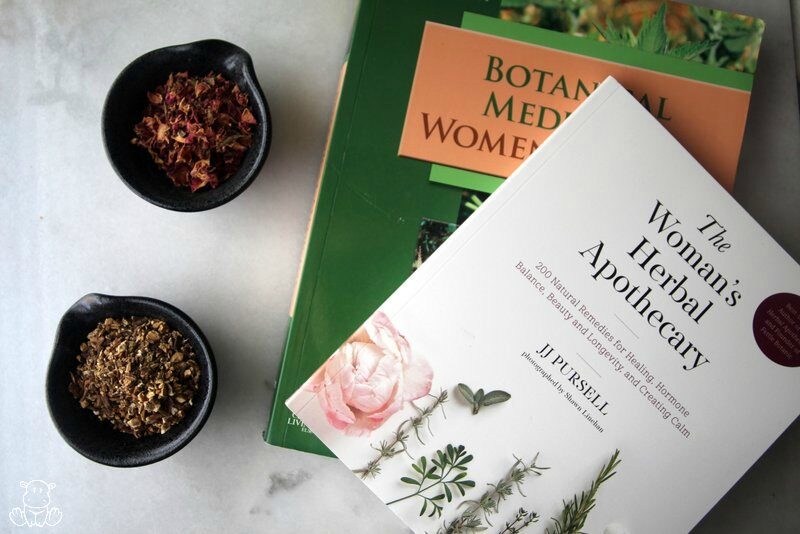
Women’s Health
Pregnancy, acne, PCOS, menopause, thyroid health, urinary tract infections, hormone balance . . . if you’ve ever had a question about holistically approaching any of these topics or something similar, these recommendations are for you.
9. Botanical Medicine for Women’s Health
Written by herbalist, M.D., and midwife Dr. Aviva Romm and 30 expert contributors, this was one of my go-to books when I was pregnant and breastfeeding. It also covers general topics like adrenal and thyroid health, plus a section on the menopausal years that I haven’t read . . . yet.
Find it here: Botanical Medicine for Women’s Health
10. The Woman’s Herbal Apothecary: 200 Natural Remedies for Healing, Hormone Balance, Beauty and Longevity, and Creating Calm
This is a relatively new book that covers the major concerns that women have, plus DIY beauty recipes, general remedies like sore throat spray, plus instructions for doing a castor oil pack and self-care practices.
Find it here: The Woman’s Herbal Apothecary: 200 Natural Remedies for Healing, Hormone Balance, Beauty and Longevity, and Creating Calm

Adaptogens
If caffeine is like a map from point A (sleepy) to point B (alert), adaptogens are more like a GPS system that figures out where you are and helps you get where you need to go (balanced). It has a grounding, centering effect that helps the body adapt to stress.
11. Adaptogens: Herbs for Strength, Stamina and Stress Relief
This is a great overview of the benefits of adaptogens, twenty-one to consider and 19 relaxing and/or brain boosting herbs that complement them. Each herb profile includes safety and dosage information.
Find it here: Adaptogens: Herbs for Strength, Stamina and Stress Relief
12. Adaptogens in Medical Herbalism
This book is an amazing deep dive into adaptogens, which are herbs that help our bodies adapt to stress and support stamina. It has a top notch materia medica with information on both traditional use for an herb, modern research and evidence-based uses, therapeutic dosages, safety profiles and more.
Find it here: Adaptogens In Medical Herbalism
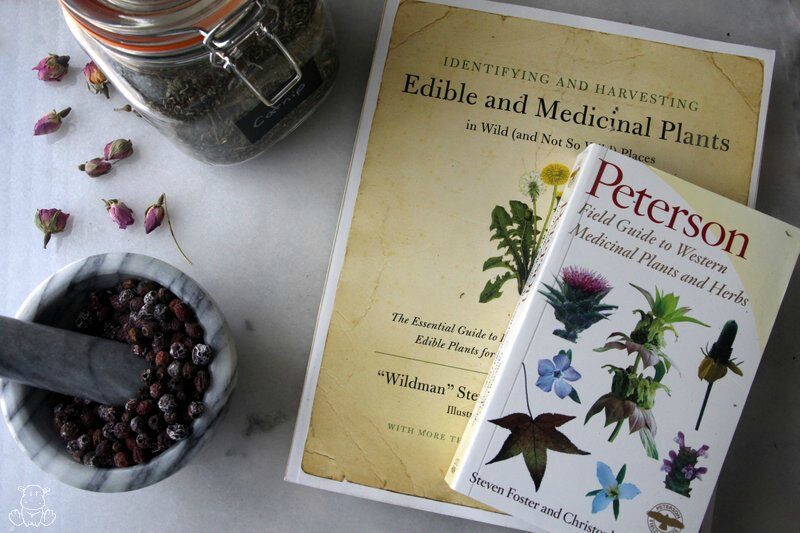
Plant Identification & Wildcrafting (Gathering Wild Herbs)
If your adventures in gathering plantain or dandelion root has whet your appetite for more foraging experiences, here are my favorite resources for identifying wild plants.
14. Peterson Field Guides
Peterson Field Guides are organized by flower color instead of name so that when you can easily find and identify common botanicals on hiking trips, a walk by a nearby lake, etc. If you’re in the United States, you can choose one of two guides based on your geographic area:
- Peterson: Field Guide to Western Medicinal Plants and Herbs – “This field guide covers the area west of the Mississippi River from the western Great Plains and West Texas through the intermountain West, including Montana, Wyoming, Colorado, and Utah, to the desert Southwest of New Mexico and Arizona and the Pacific states of California, Oregon and Washington.
- Peterson: Field Guide to Medicinal Plants and Herbs of Eastern and Central North America – “This guide covers all states east of, but excluding, Colorado, Montana and New Mexico. It does not fully cover the southern half of Florida or the southern and western halves of Texas.”
15. Identify and Harvesting Edible and Medicinal Plants
This is a helpful companion to the Peterson guides because it has:
- detailed drawings, which can be a really helpful addition to the Peterson photos when comparing the distinguishing characteristics of a plant
- wild food recipes to inspire you
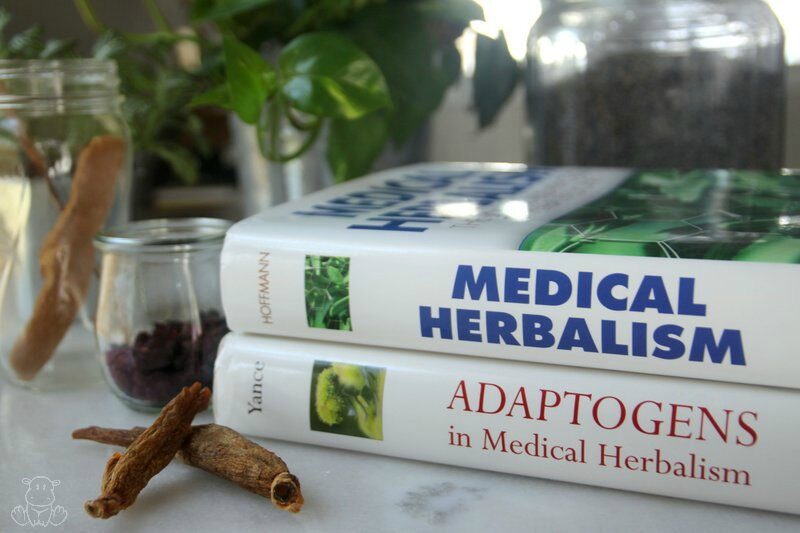
Medical Herbalism
These are actually textbooks for individuals who are training to become medical herbalists, but they’re great for those of us who just love to learn, too.
8. Adaptogens in Medical Herbalism (listed above)
See the “Adaptogens” section above a description of this book.
9. Medical Herbalism: The Science and Practice of Herbal Medicine
When I’m digging deep into a subject, this is one of the first books I reach for. It’s the one of the most comprehensive resources I own in terms of pharmacology and evidence-based herbal protocols for just about any concern you can think of. It has a rich materia medica as well.
Find it here: Medical Herbalism: The Science and Practice of Herbal Medicine
Got a question about one of these books or want to recommend one I didn’t include? Please leave a comment below!
Sources
1. Healing Mushrooms by Tero Isokauppila
2. Scientific American (2001) Mother Nature’s Medicine Cabinet. Retrieved from https://ift.tt/2MkIAxL
3. Desborough, Michael and Keeling, David (2017) The Aspirin Story – From Will To Wonder Drug. Retrieved from https://ift.tt/2yh1OMv
Continue reading Top 15 Herb Books for Your Home Apothecary...
from Mommypotamus https://ift.tt/2MkIBBP



No comments: